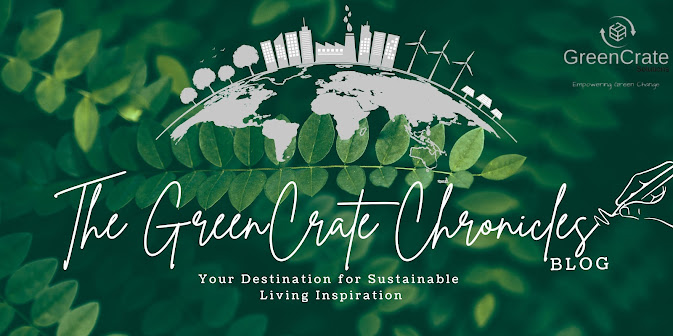“Combatting Desertification and Drought: How Land Restoration Can Secure Our Future for All”
1. 🌍 Introduction: Why June 17 Matters
The International Day to Combat Desertification and Drought, observed on 17 June, reminds us that land degradation threatens the planet’s future. Today, up to 40 % of global land is degraded, affecting more than 3.2 billion people. un.org
Desertification and drought worsen food insecurity, water scarcity, forced migration and biodiversity loss.
2. What Are Desertification & Drought?
-
Desertification: Land becomes arid and unproductive due to climatic shifts and human mismanagement. unccd.int
-
Drought: Persistent lack of rainfall, amplified by climate change, that disrupts ecosystems, agriculture, and livelihoods.
From 1970 to 2020, 77.6 % of Earth’s land became permanently drier; the global dryland area grew by 4.3 million km². time.com.
3. How It Happens – Drivers & Dynamics
A. Climate Change:
-
Global warming reduces rainfall and increases evaporation, making dry areas drier.
-
Drought frequency has risen 29 % since 2000. activesustainability.com
B. Human Activity:
-
Overgrazing, deforestation, and unsustainable agriculture degrade soil. activesustainability.com
-
Land-use changes—up to 75 % transformed for agriculture, of which 23 % of greenhouse gases, 80 % of deforestation, and 70 % of freshwater use are linked to agriculture. reuters.com.
C. Feedback Loops:
-
Loss of vegetation increases erosion and desert expansion, which then worsens drought .
-
Dust storms, crop failures, and forced migration create social instability. unepdhi.org.
4. Who Suffers the Most?
A. Vulnerable Populations:
-
Rural and indigenous people—around 2 billion worldwide, 90 % in developing countries—rely on dryland ecosystems for survival.
-
Between 1998–2017, droughts cost USD 124 billion and affected 55 million people annually.
-
Water stress reached 2.3 billion people, and 160 million children faced prolonged droughts in 2022. thecommonwealth.org
B. Global Reach:
-
Threatens food security, with staple crop yields dropping in sub‑Saharan Africa.
-
5 billion people could be affected by century’s end. apnews.com.
-
Regions at high risk include Sahel, Southern Africa, Mediterranean, China, Brazil, and the U.S.

5. Solutions – What Works
5.1 Early Warning & Monitoring
-
Drought forecasting systems, like Kenya’s VCI3M satellite model, predict conditions 4–6 weeks ahead, enabling proactive support. arxiv.org.
-
Integrated drought programs (IGAD) combine research, water harvesting, and cross-border coordination in East Africa. igad.int.
5.2 Sustainable Land Management
-
Reforestation, agroforestry, and soil restoration reverse degradation.
-
Native plant regeneration and dune barriers help stabilize land.
-
Integrated water‑soil management enhances productivity and resilience. activesustainability.com
5.3 Ambitious Reforestation Projects
A. African Great Green Wall
-
Launched 2007 across 11 African nations aiming to restore 100 million ha, create 10 million jobs, sequester 250 MT CO₂ by 2030.
-
Mixed progress: only 18 % complete by 2023, but Nigeria restored 4.9 M ha, Ethiopia 15 M ha, and Senegal planted 11 M trees.
-
Techniques now include natural regeneration and local irrigation. en.wikipedia.org
B. Great Green Wall (China)
-
3,000 km tree belt around the Taklamakan Desert. Desert area shrank from 27.2 % to 26.8 % over a decade. en.wikipedia.org.
-
30 M ha greened, with fewer dust storms and more stable micro‑climates. thecommonwealth.org.
-
Solar‑agro integration ("sand-plus-solar") shades soil and supports crops, combining renewable energy with greening.
C. West Asia & North Africa
-
Morocco is scaling up 17 desalination plants, four under construction, aiming for 1.7 billion m³/year capacity by 2030, freeing dam water for farming. reuters.com.
-
Saudi green projects include US $80 million funding for Sahel reforestation and national strategies for Iraq, Armenia and Georgia. unep.org
-
Algeria's Green Dam restoration plan—US $128 million since 2000—revives national tree corridors. en.wikipedia.org
6. Costs, Returns & Equity
6.1 Investment Needs
-
UNCCD estimates US $2.6 trillion needed by 2030—roughly US $1 billion/day. reuters.com
-
Currently, only 6 % of that comes from private investors .
-
Land degradation costs ~US $42 billion/year globally, plus colossal hidden social costs. wincalendar.com.
6.2 High Returns
-
Each US $1 invested can yield US $30 in returns via improved food, water, biodiversity and carbon sequestration. un.org
-
Morocco’s desalination, powered by renewables, illustrates cost-effective, climate-resilient water strategy.
6.3 Equity & Inclusivity
-
Solutions must involve small-scale farmers, indigenous peoples and youth, especially in low-income nations.
-
Legal frameworks like the UNCCD (197 parties) support national land programs across all income levels.
-
Rich nations have pledged $12 billion via the Riyadh Drought Resilience Partnership, but Africa still needs more. ft.com
7. Global Responsibility: Everyone Shares the Burden
Desertification is neither rich nor poor—it affects all. Evidence shows that while poorer nations suffer first and worst, wealthier countries can—and must—help fund innovations, infrastructure and fair land-use policies.
-
Developed nations provide financing, technology and policy know-how; emerging economies pilot innovative solutions (e.g., solar-agro in China, desalination in Morocco).
-
UN-backed initiatives highlight global partnerships: UNCCD, IGAD, Commonwealth and private-public coalitions.
8. Call to Action – Inspiring Hope
-
Invest now: Mobilize US $1 billion/day in public and private funds.
-
Empower communities: Equip smallholder farmers, indigenous people and youth with tools, land rights and training.
-
Scale solutions: Expand proven models—Green Walls, agroforestry, solar irrigation and monitoring systems.
-
Enact policies: enforce land-use laws, incentives and nature-based approaches via the UNCCD and national commitments.
9. Conclusion – Our Shared Legacy
Combatting desertification and drought is essential—not optional. For every degraded hectare returned to life, we restore hope, livelihoods, biodiversity and climate balance. The solutions exist; embracing them brings resilience for all—regardless of geography or wealth. On International Day 17 June, let's unite to heal the land and secure our future — for everyone, everywhere.





.png)
%20(1).png)
.png)
Comments
Post a Comment